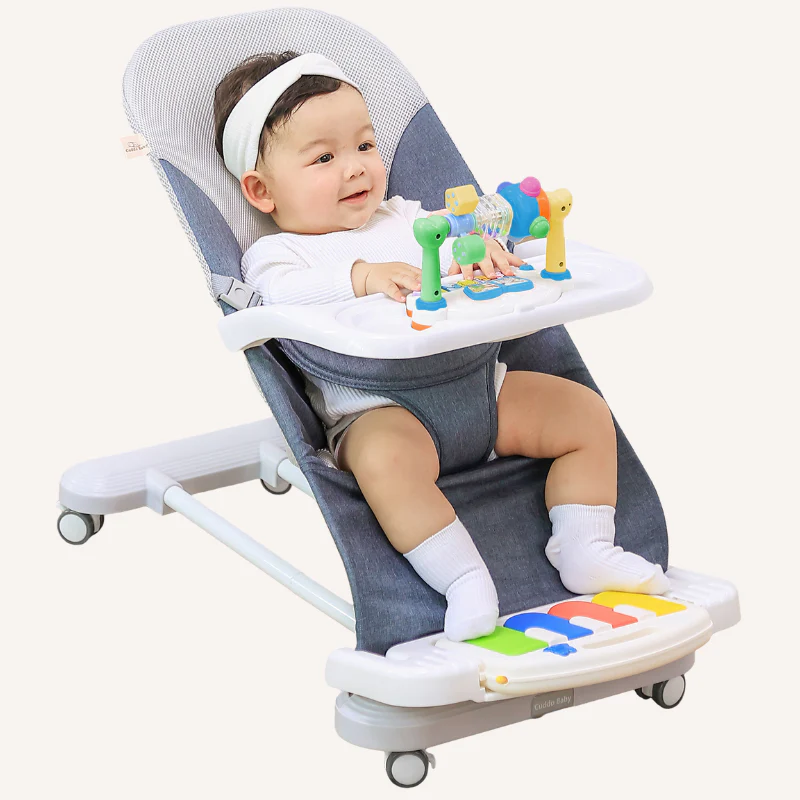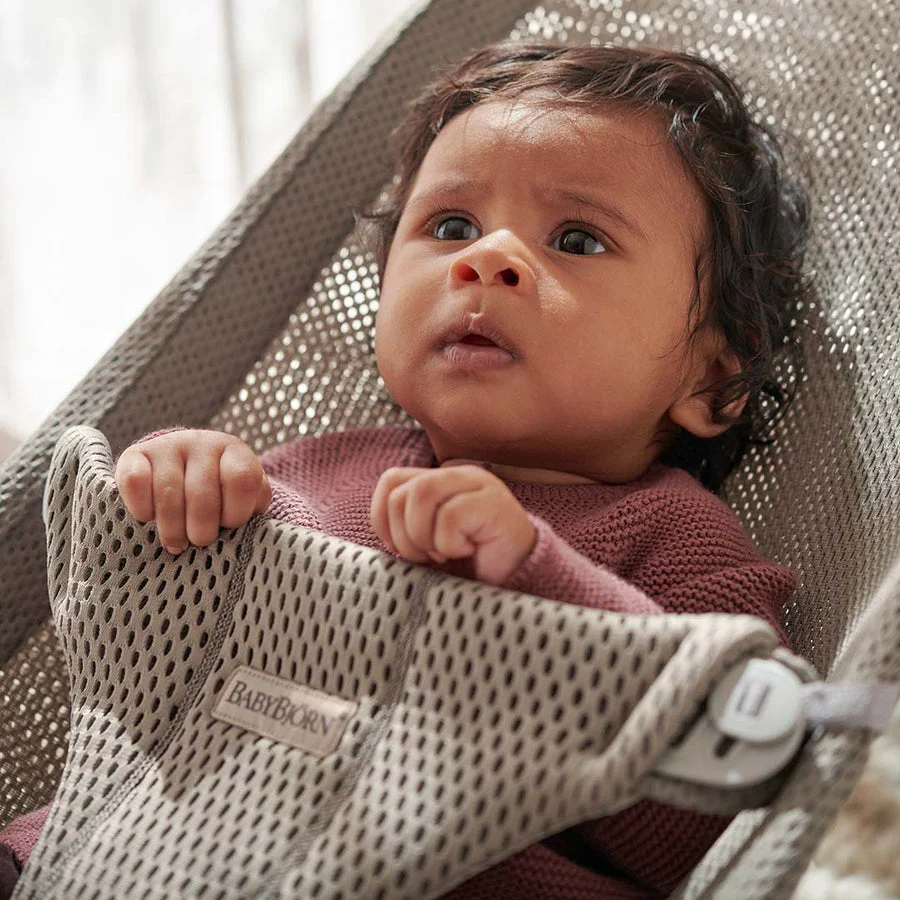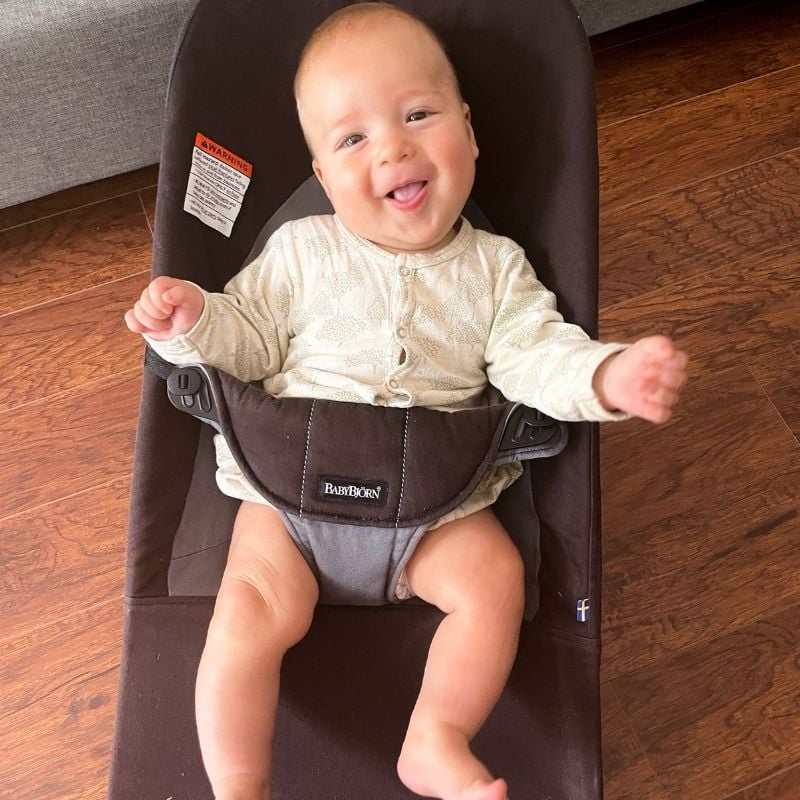I. Introduction

A. Explanation of a baby bouncer
A baby bouncer is a seat that is designed to cradle and support an infant in a reclined position while allowing them to bounce gently when they kick their legs or move. It is typically equipped with a harnessed restraint to ensure the baby’s safety and often includes toys or attachments to engage the child. Baby bouncers are widely used by parents to provide a secure and soothing environment for their infants.
B. Importance of knowing the right time for using a baby bouncer
Understanding when it is appropriate to use it is crucial for the child’s safety and development. Using a baby bouncer too early or too late can have an impact on the baby’s physical development and comfort. It’s vital for parents and caregivers to be aware of the signs that indicate a baby is ready for a bouncer and to consider the developmental stages and safety precautions necessary.
II. Understanding the Age and Development
A. Developmental stages for introducing a baby bouncer
Babies develop at different rates, but generally, they are typically ready for a baby bouncer around the age of 3 to 6 months when their neck muscles have grown stronger. At this stage, the baby can hold their head up independently and has better control over their upper body, making it safer for them to use a bouncer. Moreover, when babies reach the stage of pushing up on their arms and rolling over, they may also find a bouncer more enjoyable.
B. Safety considerations for newborns and infants
Newborns lack the necessary neck and head control to be able to use it safely. Placing a newborn in a bouncer poses a risk of suffocation, as the child’s airway may not be fully developed to maintain an open position. Therefore, it is recommended to avoid using a baby bouncer for newborns and to wait until the baby is developmentally ready for such a device.
C. Signs that your baby is ready for a bouncer
Several signs indicate that a baby is ready for a bouncer. These include the ability to hold their head up and maintain good head control, actively kicking their legs, showing signs of wanting to be in a more upright position, and displaying an interest in engaging with toys and objects. These signs are indicators of the baby’s physical and cognitive readiness to use a baby bouncer safely and enjoyably.
III. Benefits of Using a Baby Bouncer

A. Engagement and entertainment for the baby
One of the main benefits of using it is that it can provide engagement and entertainment. With colorful toys and activities attached to it, it can keep the baby occupied and stimulated, allowing the parents to have some hands-free time to attend to other tasks. The gentle bouncing motion can also be soothing for the baby, helping them to relax and potentially even fall asleep.
B. Helping with development and strengthening muscles
Another significant benefit of using a baby bouncer is its ability to help with the baby’s development and strengthening of muscles. The bouncing motion can encourage the baby to use and develop their leg muscles, which is important for their overall physical development. Additionally, the ability to reach for and play with the attached toys can aid in the development of hand-eye coordination and fine motor skills. As the baby grows and becomes more mobile, the bouncer can also provide a safe place for them to practice standing and eventually bouncing on their own, further strengthening their muscles and coordination.
C. Providing a safe and comfortable space for the baby to rest
Lastly, using a baby bouncer can provide a safe and comfortable space for the baby to rest. The supportive seat and secure harness can keep the baby in a safe and upright position, reducing the risk of them rolling over or falling when the parents need to step away for a moment. The soft padding and adjustable recline feature also ensure that the baby is comfortable while resting or playing in the bouncer. This can be particularly beneficial for parents who need a safe place to put their baby down for short periods, such as during meal times or while getting ready for the day.
IV. Risks and Concerns
A. Potential dangers of using a bouncer too early
Despite the benefits, it’s important to be aware of the potential risks associated with using a baby bouncer too early. Placing a newborn in a bouncer before they have achieved sufficient neck and head control can pose a risk of suffocation and potential developmental issues. It is crucial to wait until the infant has reached the appropriate developmental stage before introducing them.
B. Safety precautions to consider

To ensure the safety of the baby while using it, it is essential to adhere to specific safety precautions. These include always using the provided safety harness, placing the bouncer on a stable and flat surface, never leaving the baby unattended while in the bouncer, and being mindful of weight and age limits specified by the manufacturer.
C. The recommended usage time
Babies should not spend an excessive amount of time in a baby bouncer. While the bouncer can provide comfort and entertainment, prolonged use can lead to potential issues such as flat head syndrome or delayed motor development. Parents should aim to limit the baby’s time in the bouncer and provide varied opportunities for the infant to play and explore in different positions.
V. How to Choose
A. Factors to consider when selecting a baby bouncer
When choosing a baby bouncer, several factors should be taken into consideration to ensure that it meets the needs of both the baby and the parent. These factors include the bouncer’s safety features, comfort, portability, adjustability, and overall quality. Furthermore, aspects such as the baby’s age, weight, and developmental stage play a crucial role in determining the most suitable bouncer for their needs.
B. Different types of baby bouncers available in the market
There are various types of baby bouncers available in the market, each offering unique features and benefits. These include traditional bouncers with a simple bouncing function, vibrating bouncers that provide soothing vibrations, and electric bouncers equipped with sound and motion settings to entertain and comfort the baby. Additionally, some bouncers come with adjustable recline positions, while others are multi-functional units.
C. Tips for using the bouncer effectively and safely
Using a baby bouncer effectively and safely requires adherence to certain guidelines. These include placing it on a stable and level surface, ensuring the baby is securely fastened with the provided safety harness, and never placing it on an elevated surface. Additionally, it’s essential to be mindful of the bouncer’s weight and age limits, as well as to avoid leaving the baby unattended for extended periods. Parents should also be aware of the duration of time the baby spends in the bouncer to prevent overuse.
Understanding the age and developmental stage at which a baby can safely use a bouncer is crucial for the child’s well-being. It is essential for parents and caregivers to be aware of the signs that the baby is ready for a bouncer and to consider the safety precautions necessary for the child’s development.
